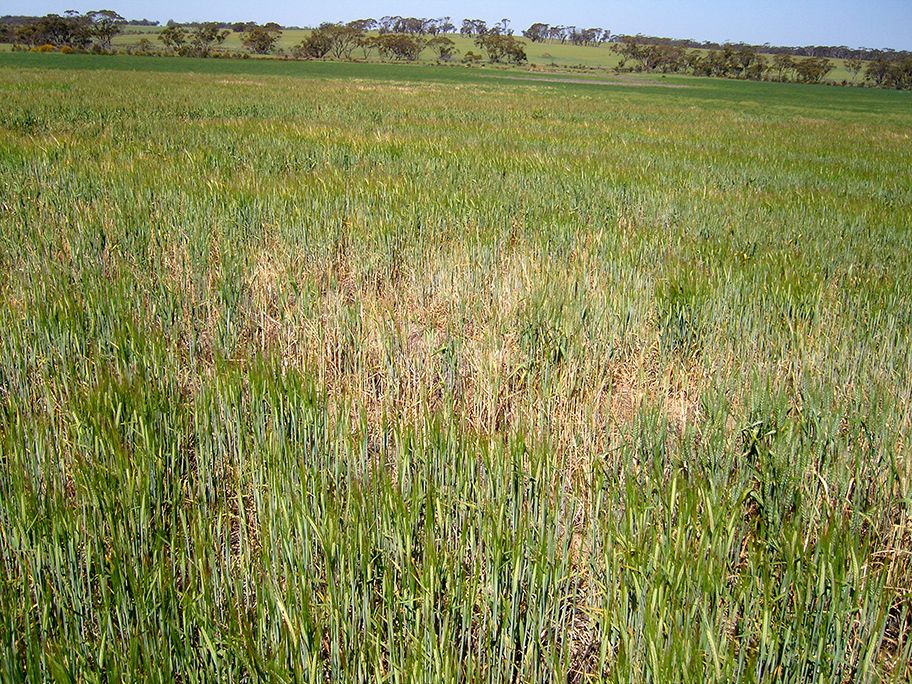Date
2021/02/17
Duration
5 min read
Organisations
SoilsWest
Department of Primary Industries and Regional Development
Grains Research and Development Corporation
University of Western Australia
What are root lesion nematodes?
Root lesion nematodes are species of Pratylenchus nematodes – microscopic, plant-parasitic worm-like organisms that can migrate freely between roots and soil (when the soil is moist). All broadacre growing regions in the south-west of Western Australia are affected by root lesion nematodes and at least 80% of cropping paddocks are infested with one or more species of Pratylenchus. Populations potentially limit yield in at least half of these infested paddocks. Root lesion nematodes are often associated with patchy, low-vigour broadacre crops. These nematodes feed on plant tissues and cause mechanical damage to the plant when penetrating, feeding on and moving within the vascular tissue of the plant host. The degree of damage is dependent upon the nematode population density, whether plants are stressed and the sensitivity of the host plant.
Pratylenchus neglectus is the dominant root lesion nematode species, identified in approximately 70% of tested paddocks, followed by P. quasitereoides (29%) and P. thornei (5%). The sandplain, central and eastern zones of the south-western agricultural region of Western Australia have the highest incidence of P. neglectus, while the sandplain and central zones have the highest incidence of P. quasitereoides. Though not often found in broadacre crops, where present, P. penetrans can cause severe damage.
Root lesion nematodes have a wide host range, which includes the most commonly grown broadacre crops in the south-western agricultural region. For example, field peas, lupins and faba beans are resistant to P. neglectus but susceptible to P. penetrans; barley is more susceptible to P. quasitereoides than to P. neglectus; and canola is susceptible to P. neglectus, P. quasitereoides and P. penetrans. Plant parasitic nematodes are often present with other plant pathogens, such as Fusarium pseudograminearum (crown rot), causing greater damage to a crop than they would on their own.

Symptoms and management of root lesion nematodes
Root lesion nematodes can be difficult to identify visually as roots can be infested without showing symptoms. The first signs of root lesion nematodes affecting a crop may be poor establishment, stunted growth, poor tillering of cereals and plants wilting despite moist soils. Nematode distribution across a paddock is usually uneven and can result in irregular or wave-like crop growth. Symptoms can be confused with, and may be exacerbated by, inadequate nutrition and a presence of rhizoctonia root rot. Infestation in a crop should be confirmed with laboratory microscopic testing or through a molecular DNA diagnostic test. Such testing identifies if root lesion nematode is the main cause of crop symptoms and also the species of root lesion nematode, which is crucial because management differs between root lesion nematode species.
Root lesion nematodes feed within infested root systems on cortical cells causing damage or cell death as they move from cell to cell. This causes browning and necrotic lesions to appear in primary and secondary roots. Roots damaged by nematodes will have fewer, shorter lateral roots branching from the main roots. The root cortex may disintegrate when the roots are washed. Root symptoms may look similar to those caused by rhizoctonia root rot, however, root lesion nematodes do not cause spear tipping.
When roots are damaged by root lesion nematodes, the plants become less efficient at taking up water and nutrients, and less able to tolerate stresses such as drought or nutrient deficiencies. Depending on the extent of damage, affected plants may partly recover if the rate of new root growth exceeds the rate at which root lesion nematodes damage the roots. Healthy soil and good nutrition may alleviate root lesion nematode damage by supporting good crop establishment and faster root growth, resulting in healthier plants that are better able to cope with infestation. Adequate nutrition can help crops compensate for the loss of root function caused by root lesion nematodes, although this does not necessarily lower nematode reproduction.
Although little can be done in-crop to minimise nematode damage, identifying the problem allows for planning in subsequent seasons. The key to root lesion nematode management is to identify paddocks with yield-limiting numbers of these plant parasites, and then incorporate resistant crops and varieties into rotation to reduce numbers. Good weed control and reduction of susceptible crop volunteers in autumn, prior to sowing, are also management tools. In heavily infested paddocks, resistant break crops should be grown for at least one year to decrease the population. Less susceptive varieties of wheat and barley can then be selected for the following years using a current crop variety guide.

Diagnosing root lesion nematode
From Soil Quality: 5 Soil Biology (Murphy et al. 2021). Video: GRDC; Additional editing: Science with Style.
References
ebook Soil Quality: 5 Soil Biology
Murphy D, Hoyle F, Collins S, Hüberli D, and Gleeson D (2021).
















